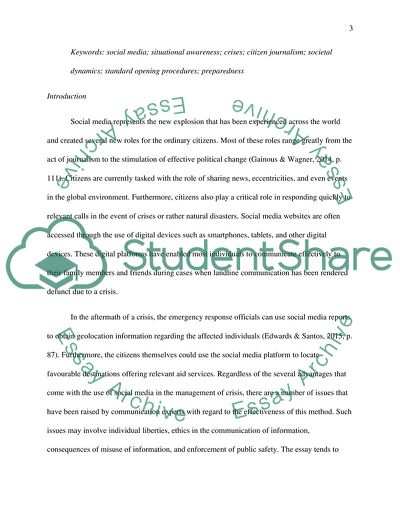Cite this document
(The Role of Social Media in Crisis Management Case Study Example | Topics and Well Written Essays - 4750 words, n.d.)
The Role of Social Media in Crisis Management Case Study Example | Topics and Well Written Essays - 4750 words. https://studentshare.org/media/1877397-the-role-of-social-media-in-the-case-of-crisis-management
The Role of Social Media in Crisis Management Case Study Example | Topics and Well Written Essays - 4750 words. https://studentshare.org/media/1877397-the-role-of-social-media-in-the-case-of-crisis-management
(The Role of Social Media in Crisis Management Case Study Example | Topics and Well Written Essays - 4750 Words)
The Role of Social Media in Crisis Management Case Study Example | Topics and Well Written Essays - 4750 Words. https://studentshare.org/media/1877397-the-role-of-social-media-in-the-case-of-crisis-management.
The Role of Social Media in Crisis Management Case Study Example | Topics and Well Written Essays - 4750 Words. https://studentshare.org/media/1877397-the-role-of-social-media-in-the-case-of-crisis-management.
“The Role of Social Media in Crisis Management Case Study Example | Topics and Well Written Essays - 4750 Words”. https://studentshare.org/media/1877397-the-role-of-social-media-in-the-case-of-crisis-management.


